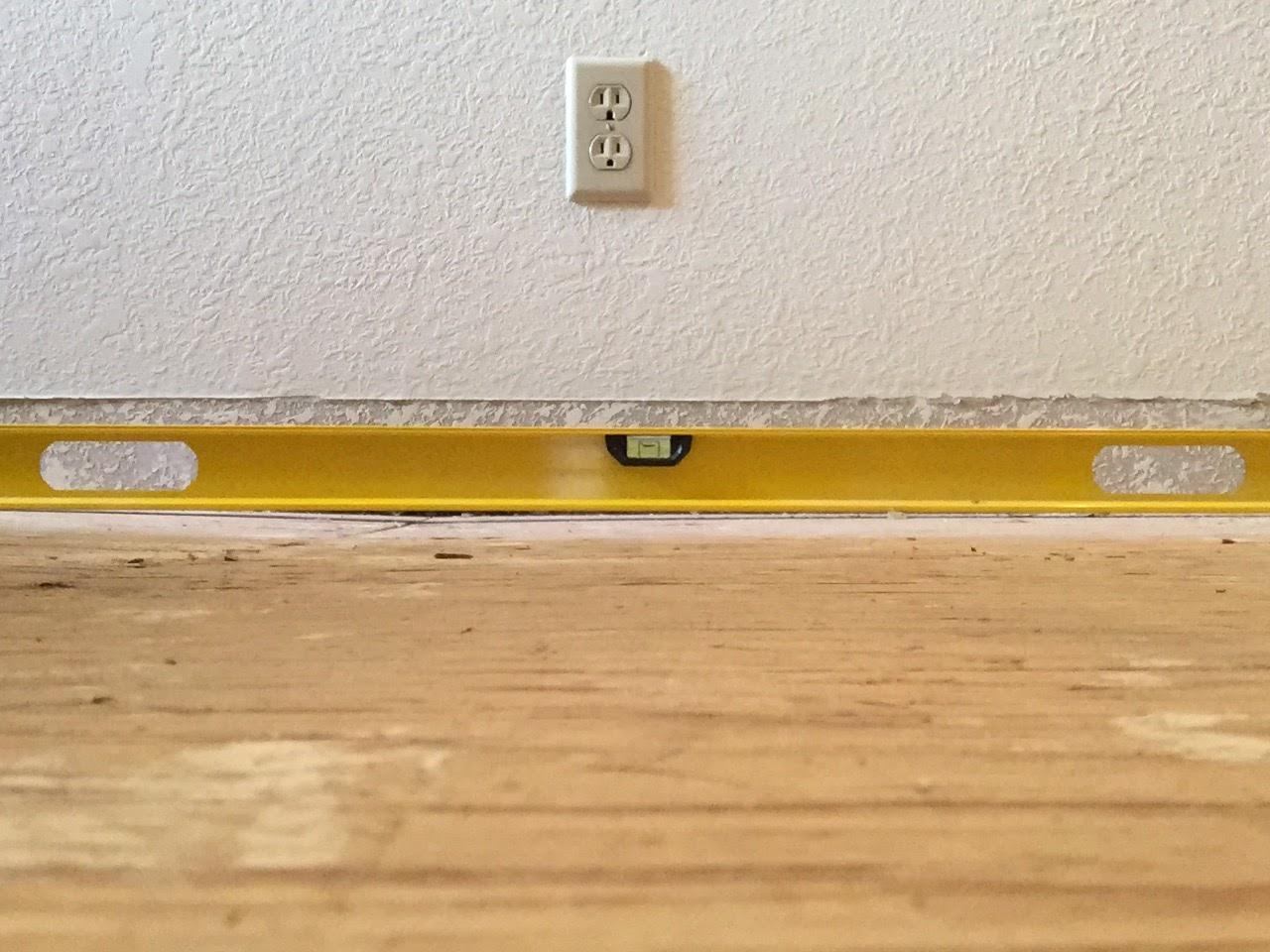That looks like an almost non-issue (especially if the flooring will run the same direction as that level, if not you'll need to do something about it). If it's a low traffic area it might not concern me in the slightest.
I HATE, quote, "self leveling" compound. It should called: aww crap, now what? (you had better know how to trowel concrete) And if you're going to use nails instead of glue, then leveling compound is out of the question. It will crack when you shoot nails into it and the flooring won't sit right on all the crumbs.
I'd either floor right over that, or lay down a new 3/8 plywood sub-floor over the whole thing (with none of the old seams lining up, and nowhere shall four corners meet; T junctions only).
I would not use felt and I wouldn't worry about having to tape that seam if you're going to use leveling compound. But you could try using strips of luan (1/8" plywood), cut to fit that gap as large as possible, so long as they're still underneath your level (a high spot would be worse IMO).
I've never glued a hardwood floor down, but if you're going to, then this probably would be an appropriate use of self-leveling compound. However I recommend neither process.


